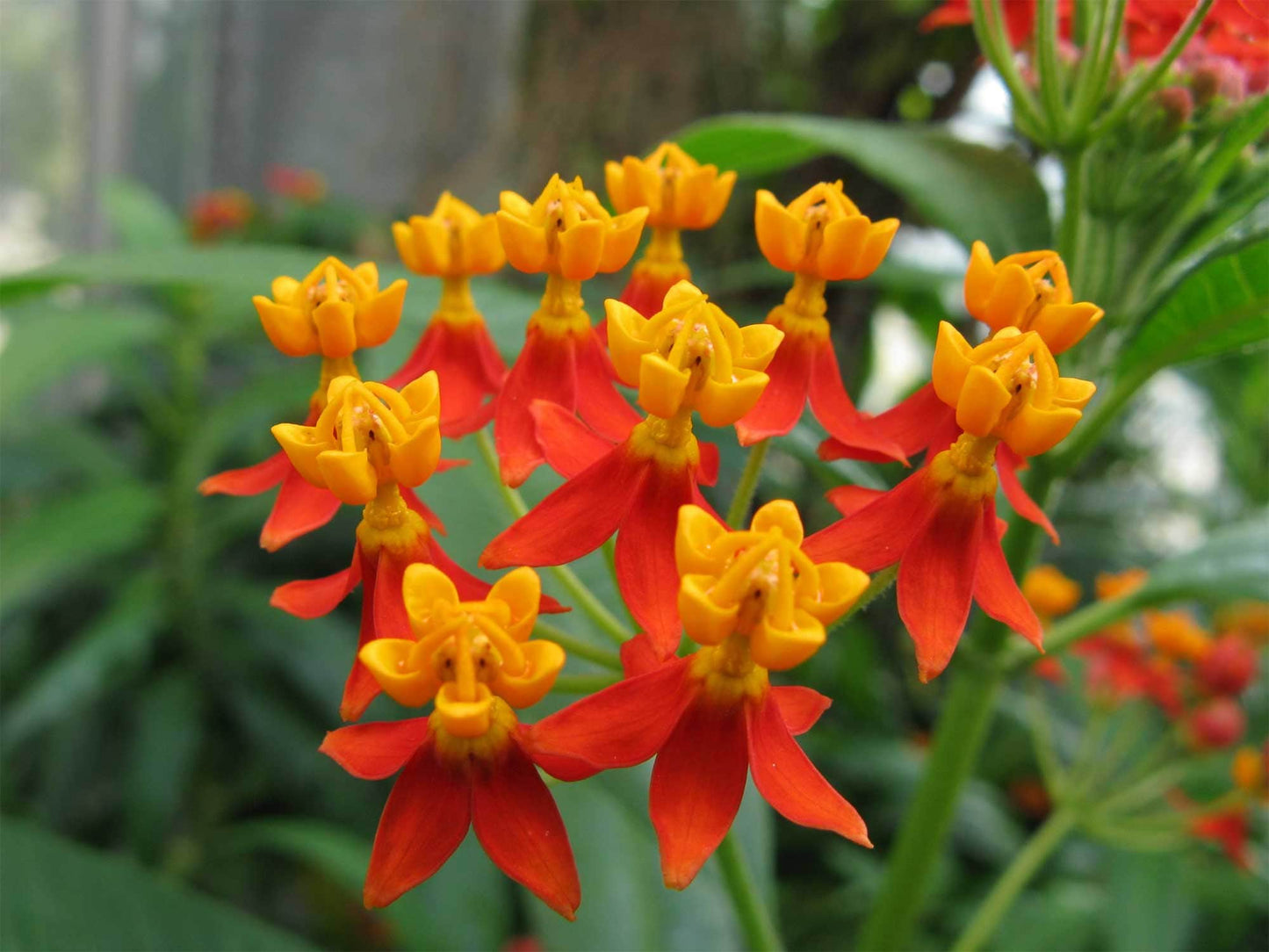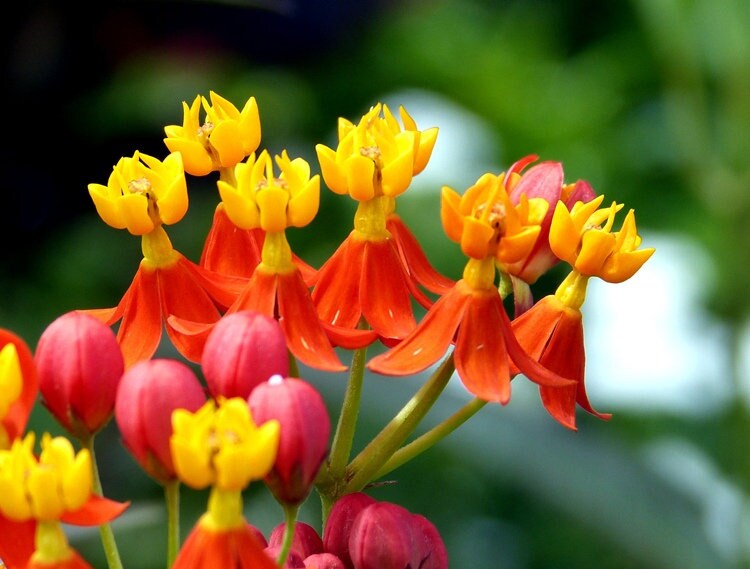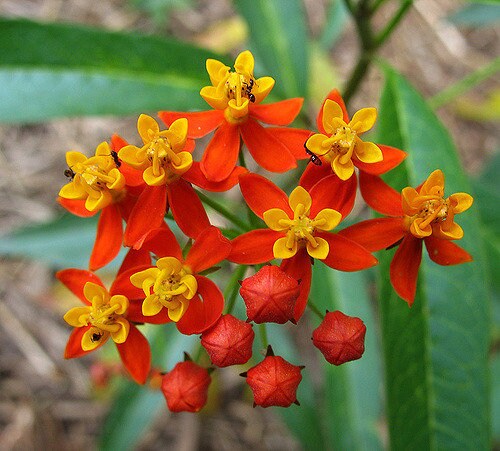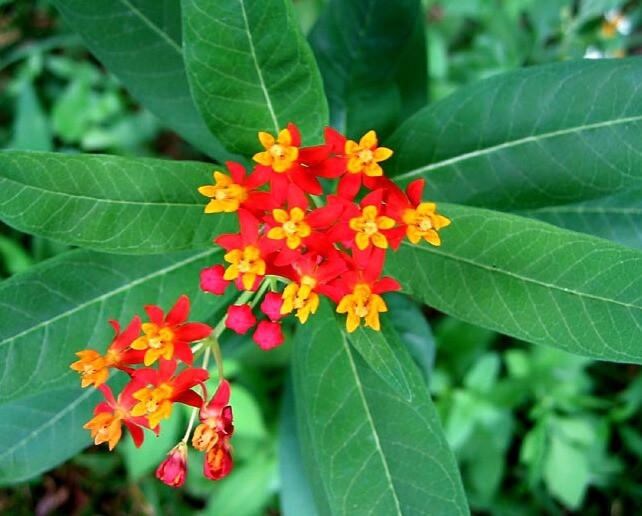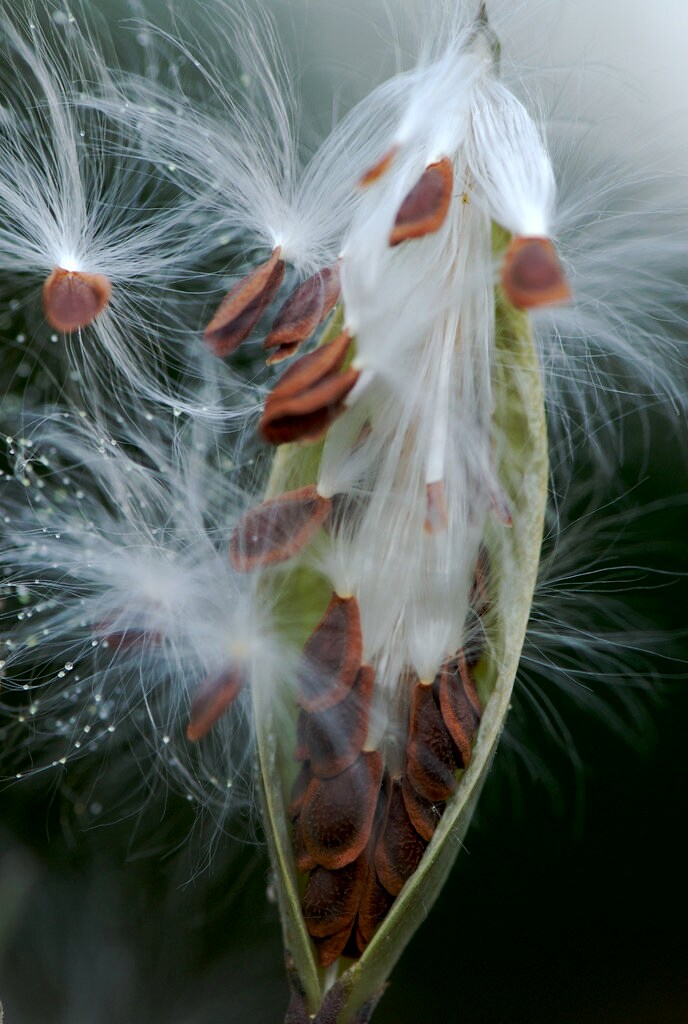Floridaseeds
Tropical Milkweed Asclepias curassavica 100 Seeds USA Company
Tropical Milkweed Asclepias curassavica 100 Seeds USA Company
Couldn't load pickup availability
Asclepias curassavica, commonly called tropical milkweed, is a tender evergreen perennial in the milkweed family. It is grown as an annual in temperate regions and as a perennial in subtropical and tropical regions. It is native to South America, but has naturalized worldwide in many tropical and subtropical areas. It has a much longer flowering period than the perennial milkweeds that are winter hardy in temperate regions. It typically grows as a subshrub to 2-3’ tall on upright stems clad with pointed, opposite, lanceolate leaves (to 6” long). Leaves are medium green sometimes with white midribs. Showy flowers with five sepals and five lobes appear in rounded axillary clusters (cymes) in late spring to early summer. Flowers are red-orange with yellow hoods. Flowering continues throughout the summer to early autumn. Hummingbirds, butterflies and bees are attracted to the flowers. Monarch butterflies lay eggs on this plant and the resulting larvae (caterpillars) use the plant leaves as a food source. Flowers are followed by long, narrow seed pods (3-4” long) which split open when ripe releasing silky tailed seeds for dispersal by wind. Stems and leaves exude a milky sap when cut or bruised. Attractive foliage and flowers for beds, borders, cottage gardens, meadows and butterfly gardens. Also a good cut flower. Dried seed pods are attractive in arrangements. zones 9-12
Growing Instructions
1. Put a mixture of potting soil and sand or perlite into a pot with drainage holes in the base. The soil should be moist and well-drained. Grows best in light, rich, evenly moist, well-drained soil in full sun. Tolerates some light shade. Tolerates some soil dryness.
2. Sow the seeds on the soil.
3. Cover the seeds with a thin layer of soil.
4. Water the seeds. Keep the soil moist but not wet.
5. When the plants are a few inches tall, they can be transplanted.
Materials
Materials
Shipping & Returns
Shipping & Returns
Dimensions
Dimensions
Care Instructions
Care Instructions
Share
